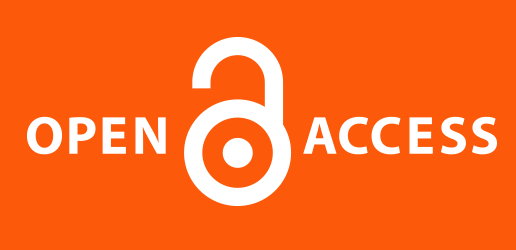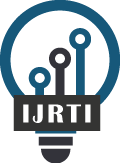|
International Journal for Research Trends and Innovation
International Peer Reviewed & Refereed Journals, Open Access Journal
ISSN Approved Journal No: 2456-3315 | Impact factor: 8.14 | ESTD Year: 2016
Scholarly open access journals, Peer-reviewed, and Refereed Journals, Impact factor 8.14 (Calculate by google scholar and Semantic Scholar | AI-Powered Research Tool) , Multidisciplinary, Monthly, Indexing in all major database & Metadata, Citation Generator, Digital Object Identifier(DOI)
|
Issue: December 2025
Volume 10 | Issue 12
Review Result and Publication of Paper within : 2-3 days
Click Here For more DetailsFor Authors
Forms / Download
Published Issue Details
Editorial Board
Other IMP Links
Facts & Figure
Impact Factor : 8.14
Issue per Year : 12
Volume Published : 10
Issue Published : 115
Article Submitted : 19445
Article Published : 8041
Total Authors : 21252
Total Reviewer : 769
Total Countries : 144
Indexing Partner
Licence
This work is licensed under a Creative Commons Attribution-NonCommercial 4.0 International License







|
Published Paper Details
|
|
| Paper Title: | Problems and Challenges in Transhumance as a Livelihood Strategy: A Case Study of Van-Gujjar in Upper Yamuna Basin. |
| Authors Name: | Jitender Singh , Dr. Rajan Bhandari |
| Download E-Certificate: | Download |
| Author Reg. ID: |
IJRTI_183385
|
| Published Paper Id: | IJRTI2207280 |
| Published In: | Volume 7 Issue 7, July-2022 |
| DOI: | |
| Abstract: | The natural environment and resources play a significant role in the livelihood of communities of any area. Many communities are still dwelling on natural resources for the livelihood and survival. Mainly, the tribal people come under the arena of such communities living in a symbiotic relationship with natural habitat. Van-Gujjar, a pastoral nomadic ethnic community of north-western states of India practicing transhumance in the Himalayan and adjacent lowland pastures in the summer and winter respectively. The present study intends to find out the problems faced by the community during the transhumance cycle and provide the possible way out for the well-being of the community. Upper Yamuna basin has been selected as the unit of analysis. The present study is entirely based on the primary sources of data-collected through intensive field survey. Groups have been selected on the basis of stratified purposive sampling. Schedule and observation methods have also been employed at three stages of transhumance cycle. The study shows a significant decrease in pasture land, resulting into decrease in quality as well as quantity of fodder and forage, leading into financial instability due to decrease in milk productivity. The study also observed that Van-Gujjars in the study area comes across plethora of multi-dimensional problems. These problems need to be resolved on time and livelihood options of the community should be diversified for the inclusive development of the community. |
| Keywords: | Transhumance, Van-Gujjars, Livestock, Environment, Pastoralism, Multi-dimensional. |
| Cite Article: | "Problems and Challenges in Transhumance as a Livelihood Strategy: A Case Study of Van-Gujjar in Upper Yamuna Basin.", International Journal of Science & Engineering Development Research (www.ijrti.org), ISSN:2455-2631, Vol.7, Issue 7, page no.1619 - 1626, July-2022, Available :http://www.ijrti.org/papers/IJRTI2207280.pdf |
| Downloads: | 000205107 |
| ISSN: |
2456-3315 | IMPACT FACTOR: 8.14 Calculated By Google Scholar| ESTD YEAR: 2016 An International Scholarly Open Access Journal, Peer-Reviewed, Refereed Journal Impact Factor 8.14 Calculate by Google Scholar and Semantic Scholar | AI-Powered Research Tool, Multidisciplinary, Monthly, Multilanguage Journal Indexing in All Major Database & Metadata, Citation Generator |
| Publication Details: |
Published Paper ID: IJRTI2207280
Registration ID:183385
Published In: Volume 7 Issue 7, July-2022
DOI (Digital Object Identifier):
Page No: 1619 - 1626 Country: Chandigarh, Chandigarh, India Research Area: Social Science and Humanities Publisher : IJ Publication Published Paper URL : https://www.ijrti.org/viewpaperforall?paper=IJRTI2207280 Published Paper PDF: https://www.ijrti.org/papers/IJRTI2207280 |
| Share Article: | |
|
Click Here to Download This Article |
|
| Article Preview | |
|
|
|
Major Indexing from www.ijrti.org
| Google Scholar | ResearcherID Thomson Reuters | Mendeley : reference manager | Academia.edu |
| arXiv.org : cornell university library | Research Gate | CiteSeerX | DOAJ : Directory of Open Access Journals |
| DRJI | Index Copernicus International | Scribd | DocStoc |
ISSN Details
 |
 |
ISSN: 2456-3315
Impact Factor: 8.14 and ISSN APPROVED,
Journal Starting Year (ESTD) : 2016
DOI (A digital object identifier)
 Providing A digital object identifier by DOI.ONE How to Get DOI? |
Conference
Open Access License Policy
Important Details
Join RMS/Earn 300
WhatsApp
Click Here
Click Here
Indexing Partner |
|||
| Copyright © 2025 - All Rights Reserved - IJRTI | |||






